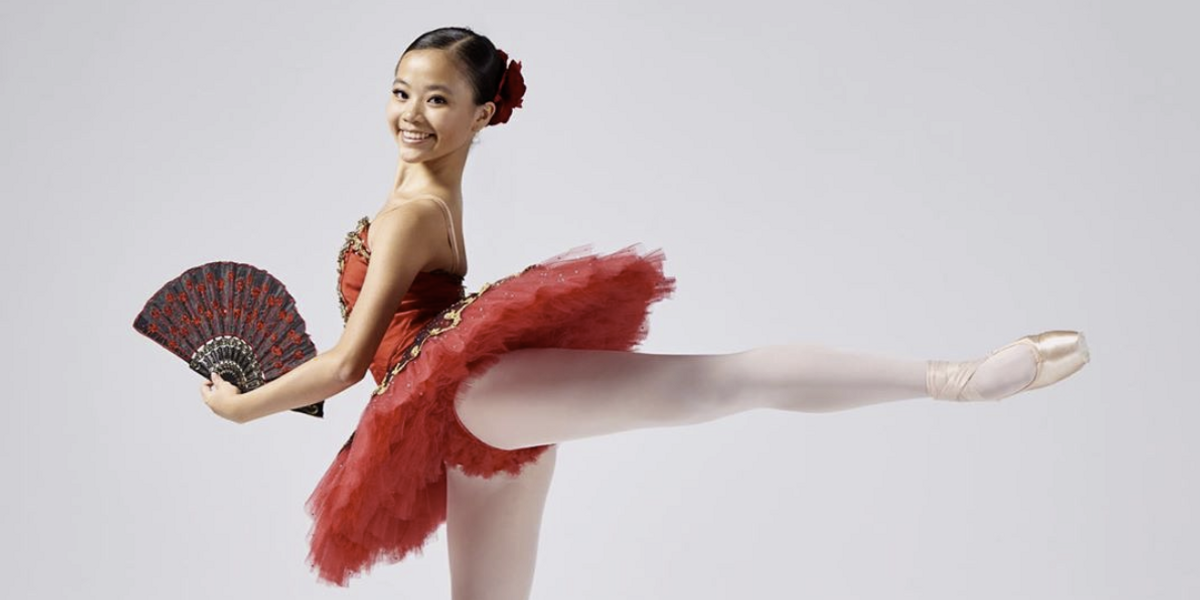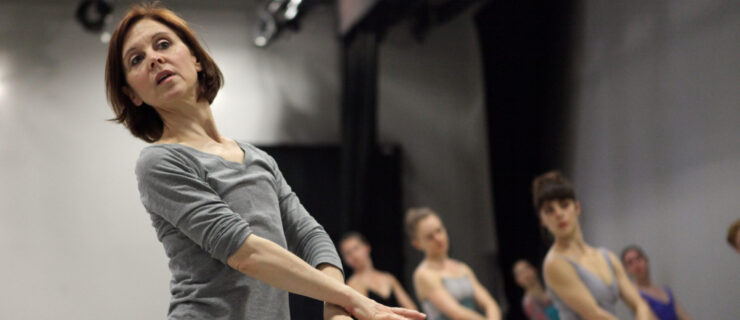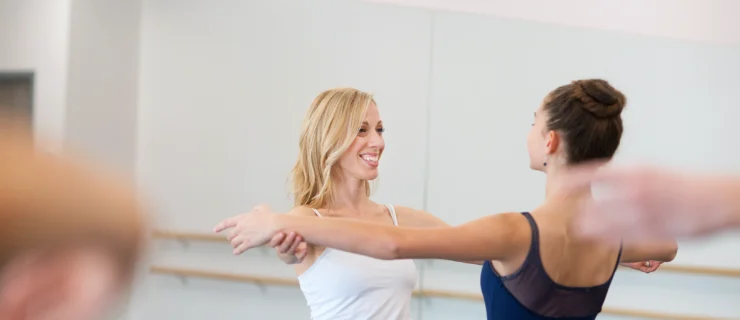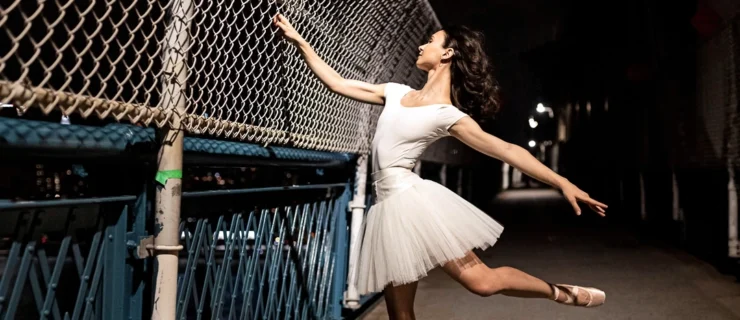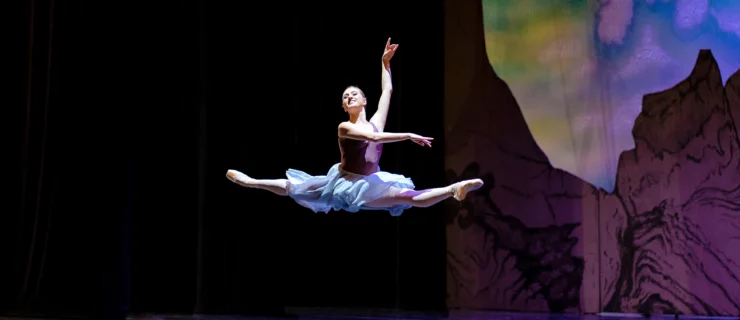Virtual Auditions Are a New Reality. Here's How to Create a Strong Online Audition Package.
The COVID-19 pandemic may have paused life as we know it, but the ballet world is still turning. Schools and companies are finding ways to move forward, and this spring many accepted full-time students, awarded scholarships and hired artists via online auditions. That’s likely to be the case over the coming months, as well, so Pointe reached out to several professionals for expert advice on preparing successful online audition materials—even if you’re dancing at home.

Darian Volkova, Courtesy YAGP
A New Normal—And New Opportunities
When studios closed, many dancers feared their dreams were derailed—not so, says Boston Ballet School director Margaret Tracey. “There is appetite out there from companies and schools for video auditions,” she says, noting that several of this year’s BBS pre-professional graduates earned apprenticeships and second-company positions online. “We’re relearning how to do everything,” Tracey says, and ballet organizations are seeing benefits, like access to a wider range of students and teachers. “When we get out of this, we’re never going back to ‘normal.'”
Youth America Grand Prix director Larissa Saveliev agrees. After YAGP’s finals were canceled in March, she developed online contestant packages that directors could search and review. Seven dancers won scholarships to The Royal Ballet School, eight to Princess Grace Academy, six to the American Ballet Theatre Jacqueline Kennedy Onassis School and more, plus contracts with The Joffrey Ballet and Boston Ballet II. “Would a live audition be better? Absolutely,” says Saveliev. “But dancers have to keep in mind that nobody has access. For the next couple of years, as studios open and close, I think this is going to be the reality.”
The shift is even resulting in unprecedented opportunities. In mid-July, for example, former San Francisco and Houston Ballet dancer Sebastián Vinet held an online audition for students in his native Chile, and nine dancers won scholarships to international schools, including The Washington Ballet School and Institute of Dance & Arts Centre in Guadalajara. “Most of these dancers would probably never have been able to travel to audition,” says Vinet. “That’s one of the positive things out of this situation—we are connecting with each other and collaborating to keep our art form alive. I think that will continue after we go back to normal life.”

Courtesy Sebastián Vinet
Your Talent Will Shine Through
You’re taking class in your kitchen, you don’t have the proper setup to do pointe or grand allégro, and you’re afraid directors won’t see your artistry on a computer screen. Don’t worry, says Tracey. “Everybody’s more forgiving. We can assess their technical capabilities, coordination and musicality, as long as it’s a good-quality video,” she says (see below for tips on making effective videos and photos at home). Dancers might be surprised at how much digital materials reveal to expert eyes, says Vinet. “You can see right away if the person has the placement, technique, physique and proportions.”
What’s harder to assess in an online audition are personal compatibility and how a dancer receives feedback, but there are workarounds for that as well, says Princess Grace Academy artistic director Luca Masala. Masala still had Academy slots to fill when Monaco locked down in March, and after screening applicants via digital submissions, he arranged one-on-one Zoom classes or requested follow-up videos that focused on specific details. “My experience with it has been very positive,” he says. If live auditions aren’t possible next year, he will continue offering online auditions.
Masala encourages using the quirks of your space as creative inspiration, such as in your contemporary or improv variation. “I was watching somebody’s improv, and the sofa was bothering them—no, use the sofa! You see how they use the space they’re in—you really see their motivation,” he says.

Getty Images
Your Online Audition Checklist
Tracey chaired the committee of school directors who created the International Audition Pre-Selection Guidelines, which we’ve adapted into this checklist for COVID-era online auditioning. Make sure any materials you submit meet the specific criteria of each school or company.
Video including the following elements
, each recorded in a single, unedited take and performed in leotard and tights for women and tight-fitting dancewear for men:
- 15- to 30-second introduction, stating your name, age, hometown, training and inspiration for dancing, so they can get to know you a little
- 60 to 90 seconds of any classical choreography you can do given your space limitations, even if you make it up yourself, and even if it’s more port de bras than anything else; do in soft shoes if pointe is not safe in your space
- 60 to 90 seconds of contemporary movement that’s different from the classical variation—create something that works in, and even uses, your indoor or outdoor space
- 3 to 5 minutes of barre work, incorporating both sides, danced in soft shoes by male applicants and pointe shoes by female applicants (this substitutes for pointe in the center)
- 3 to 5 minutes of center work that includes adagio, pirouettes and petit allégro; grand allégro and pointe are optional depending on your space
A resumé or CV
A description of your COVID-adapted training
for the previous 3 months, including a typical daily schedule, technique and conditioning classes, other fitness activities, and a description of the space you dance in (studio, carpeted living room, kitchen, etc.)
A headshot
2 to 3 dance photos
that reveal your body proportions and line
Your fitness and technique are likely to evolve as you’re training at home—they might even improve—or you might have a growth spurt, so update your materials to keep them accurate. At times when you have access to studio space, take the opportunity to record yourself there. And mind your social media, because schools and companies are turning to them more frequently to get to know you better. “Your social profile should be a professional resumé,” says Saveliev, so express your personality, but keep the content tasteful. “If directors are trying to choose between two people, the one who has a lot of footage and updates on a regular basis will have the advantage.”
No Studio? No Fancy Lighting? No Problem.
You can create effective audition photos and videos at home, even on your smartphone. New York City–based photographer Rachel Neville, whose clients include Grishko, Dance Theatre of Harlem, Boston Ballet and hundreds of aspiring dancers, offers these tips.
Choreography:
Choose choreography that shows off your range but isn’t too ambitious. “To get a good recording, you may need to run it four or five times full-out, with a level of ease and grace,” Neville says. “Audition videos are not the time to do a variation you’re trying to grow into.”
Space:
Minimize visual distractions by tidying the room and removing clutter.
Camera:
Place the lens no higher than hip height and no lower than your knees, measured when you’re standing next to the camera; any higher or lower will distort your proportions. Use a horizontal orientation so the camera can capture full arm and leg extensions, as well as side-to-side movement. Don’t tilt or lean your phone to prop it up; use a tripod or a wad of packing tape to keep it perfectly upright and stable.
Lighting:
Natural light is clear and flattering, so shoot when the room is brightest during the day. Place the camera so that the window is behind it and it’s recording you straight-on (phone cameras don’t read backlighting). You can also shoot outdoors, such as stills in front of a plain wall or garage door.
Special effects:
Don’t use any filters, GIFs, animations or text.
Editing:
Directors want to see complete choreography in a single take. “The minute you start cutting, they think you have a problem,” says Neville. “You don’t want them to have any doubt that you were able to handle the variation.” For a professional touch, stand for two breaths before you start dancing and again when you’re finished, then cut the footage of yourself walking on and off camera.
